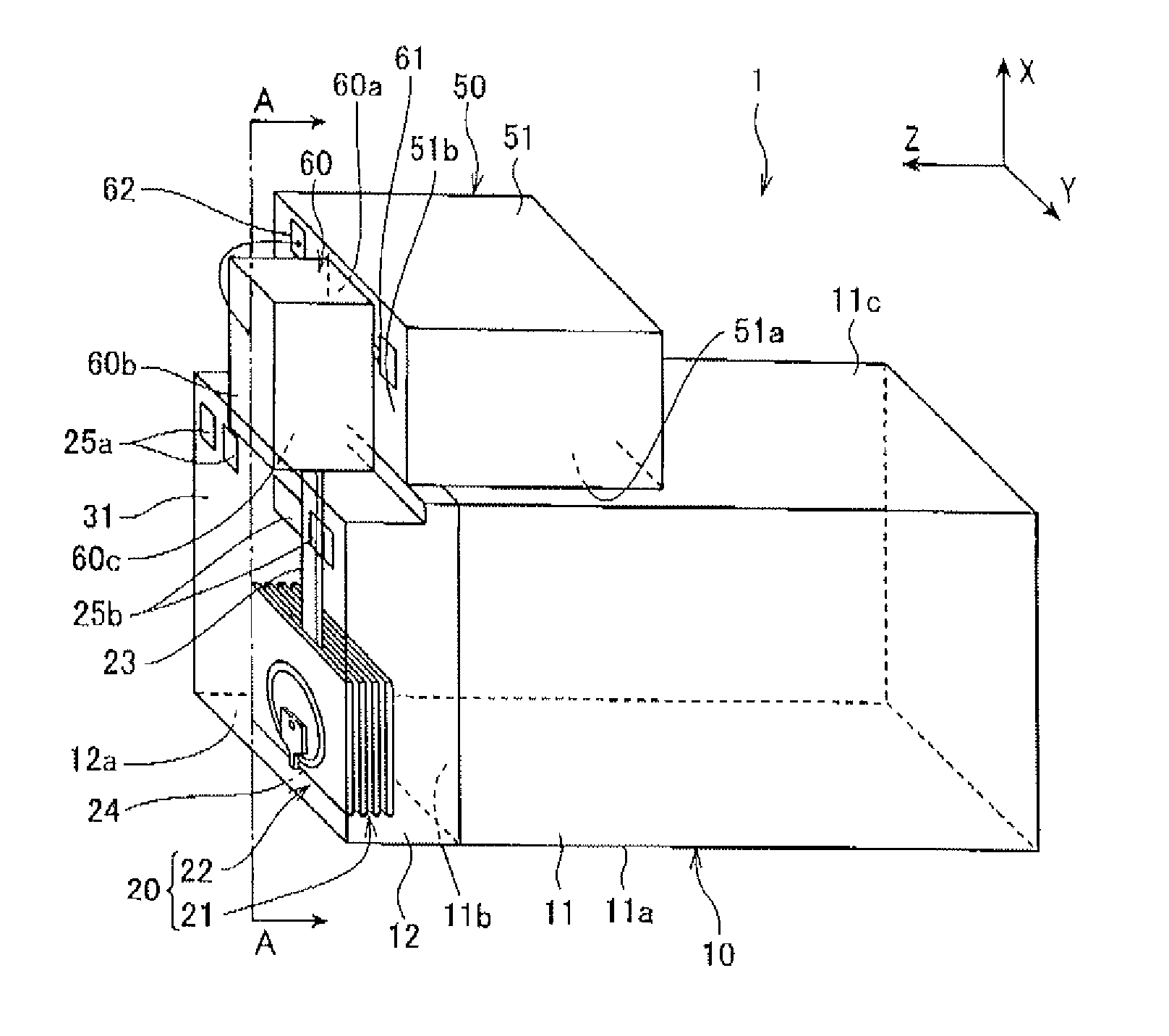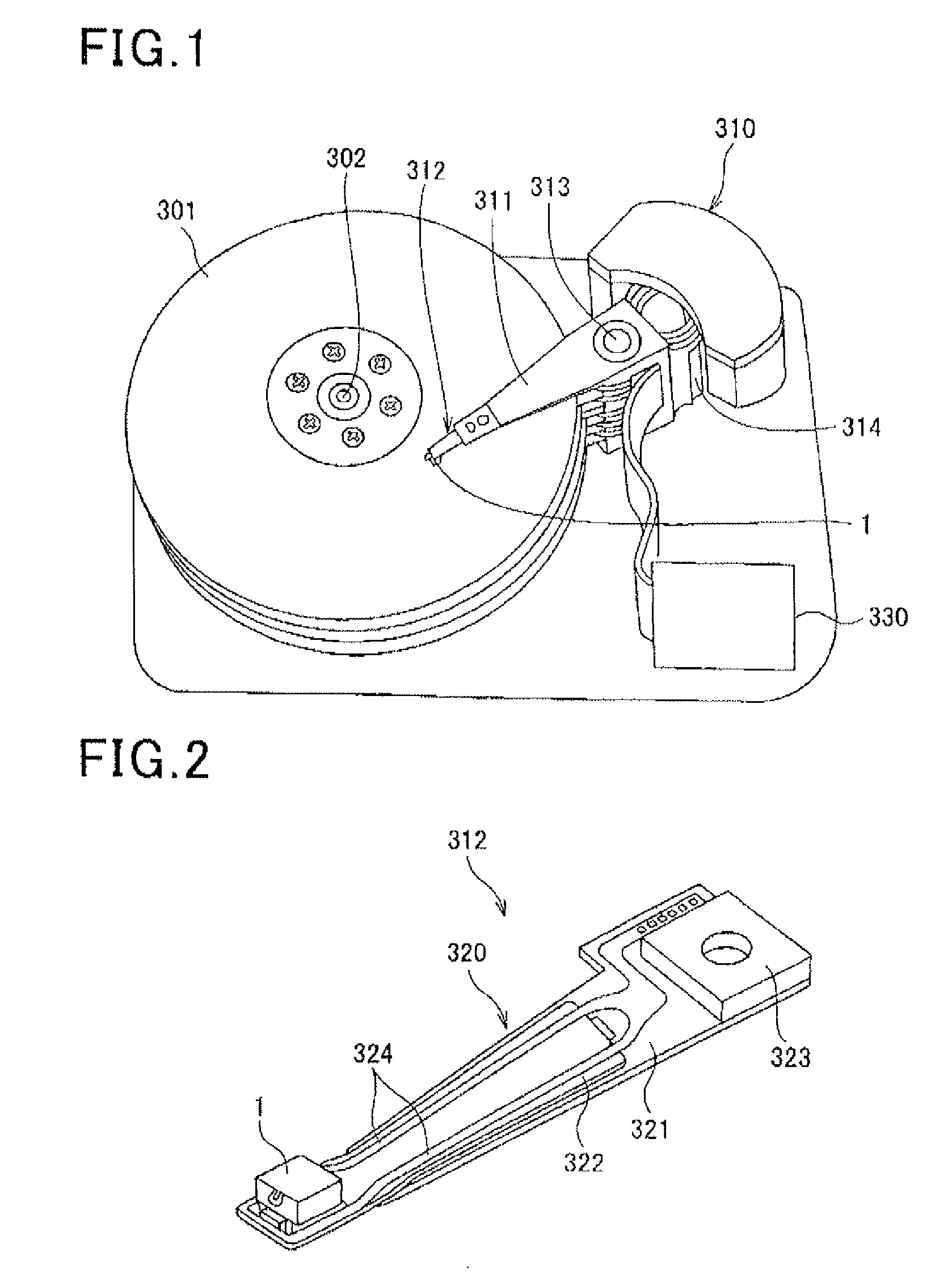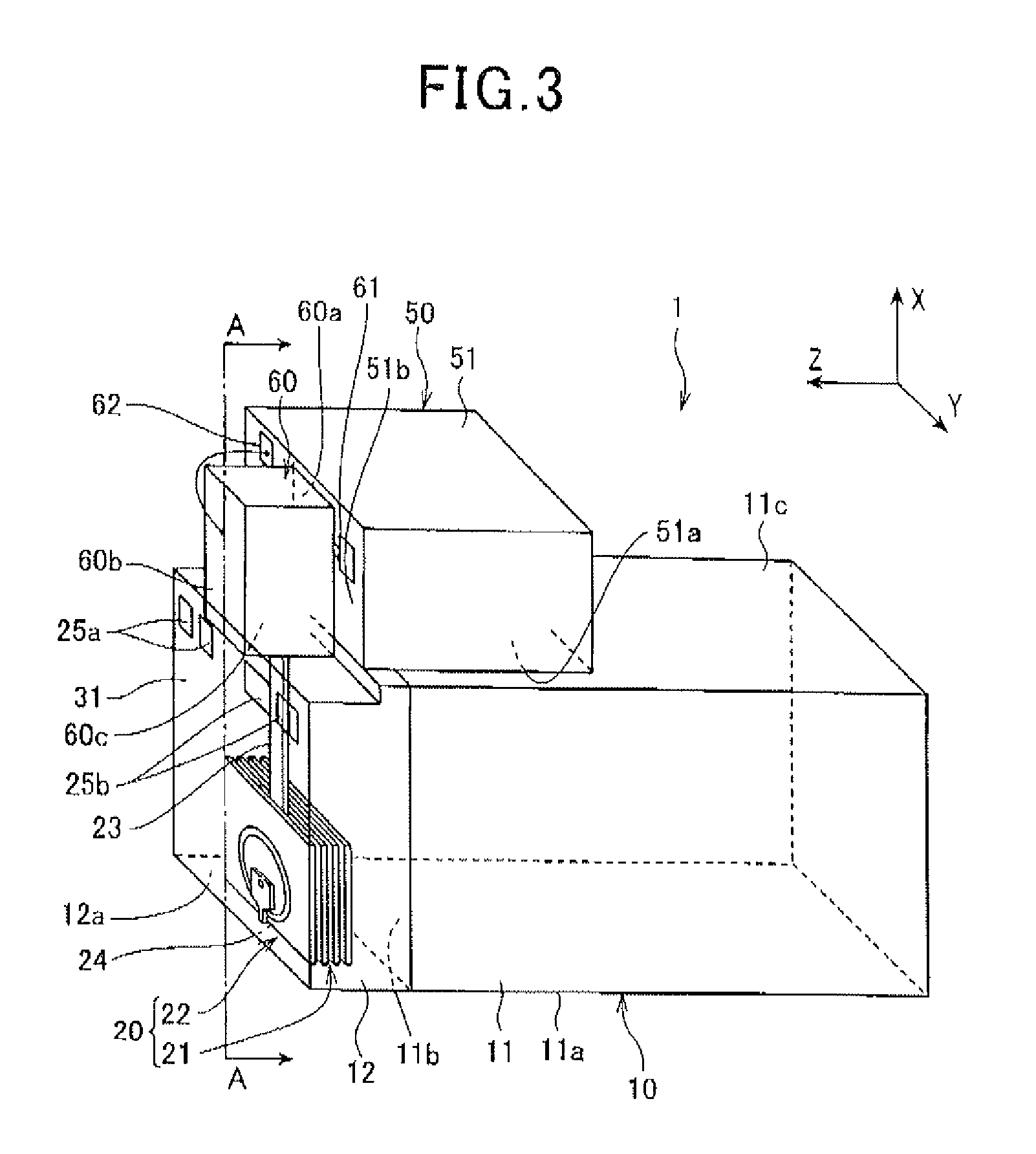Thermally assisted magnetic recording head
a technology of magnetic recording and thermally assisted head, which is applied in the field of head for thermally assisted magnetic recording, can solve the problems of increasing the anisotropic magnetic field (coercive force) of the magnetic recording medium, lowering the thermal stability of the magnetic particle magnetization, and unable to write, so as to achieve the effect of suppressing the degradation of the magnetic pol
- Summary
- Abstract
- Description
- Claims
- Application Information
AI Technical Summary
Benefits of technology
Problems solved by technology
Method used
Image
Examples
experimental example 1
[0122]Regarding fluctuations of temperatures at a magnetic pole due to generation of the near-field light in the near-field light generating optical system in the thermally assisted magnetic recording head, a simulation analysis experiment was conducted as discussed below.
[0123]This simulation analysis experiment was conducted using a three-dimensional finite-difference time-domain method (FDTD method) that is a method for electromagnetic field analysis.
[0124]As a thermally assisted magnetic recording head according to the present experimental example, the thermally assisted magnetic recording head 1 shown in FIGS. 7 and 8 was used, in which the waveguide 23 is formed by Ta2O5 (refractive index nWG=2.15) that has a cross-section with a 500 nm width in the Y axis direction and a 400 nm thickness in the Z axis direction, the passivation layer 31 that functions as a cladding is formed by Al2O3 (alumina, refractive index nBF=1.65), and the convex part 222 of the main magnetic pole 220 i...
experimental example 2
[0129]The following simulation analysis experiment was conducted regarding the relationship between the thickness of the plasmon generator and the peak intensity of the near-field light for the generation of the near-field light in the near-field light generating optical system in the thermally assisted magnetic recording head.
[0130]The simulation analysis experiment was conducted using a three-dimensional finite-difference time-domain method (FDTD method) that is a method for electromagnetic field analysis.
[0131]In the present experimental example, the thermally assisted magnetic recording head 1 shown in FIGS. 7 and 8 was used, in which the waveguide 23 was formed by Ta2O5 (refractive index nWG=2.15) that had a cross-section with a 500 nm width in the Y axis direction and a 400 nm thickness in the Z axis direction, the passivation layer 31 that functions as a cladding was formed by Al2O3 (alumina, refractive index nBF=1.65), and the convex part 222 of the main magnetic pole 220 wa...
experimental example 3
[0134]The following simulation analysis experiment was conducted regarding the relationship between the thickness of the plasmon generator and the peak intensity of the near-field light for the generation of the near-field light in the near-field light generating optical system in the thermally assisted magnetic recording head.
[0135]The simulation analysis experiment was conducted using a three-dimensional finite-difference time-domain method (FDTD method) that is a method for electromagnetic field analysis.
[0136]In the present experimental example, the thermally assisted magnetic recording head 1 shown in FIGS. 7 and 8 was used, in which the waveguide 23 was formed by Ta2O5 (refractive index nWG=2.15) that had a cross-section with a 500 nm width in the Y axis direction and a 400 nm thickness in the Z axis direction, the passivation layer 31 that functions as a cladding was formed by Al2O3 (alumina, refractive index nBF=1.65), and the convex part 222 of the main magnetic pole 220 wa...
PUM
 Login to View More
Login to View More Abstract
Description
Claims
Application Information
 Login to View More
Login to View More - R&D
- Intellectual Property
- Life Sciences
- Materials
- Tech Scout
- Unparalleled Data Quality
- Higher Quality Content
- 60% Fewer Hallucinations
Browse by: Latest US Patents, China's latest patents, Technical Efficacy Thesaurus, Application Domain, Technology Topic, Popular Technical Reports.
© 2025 PatSnap. All rights reserved.Legal|Privacy policy|Modern Slavery Act Transparency Statement|Sitemap|About US| Contact US: help@patsnap.com



